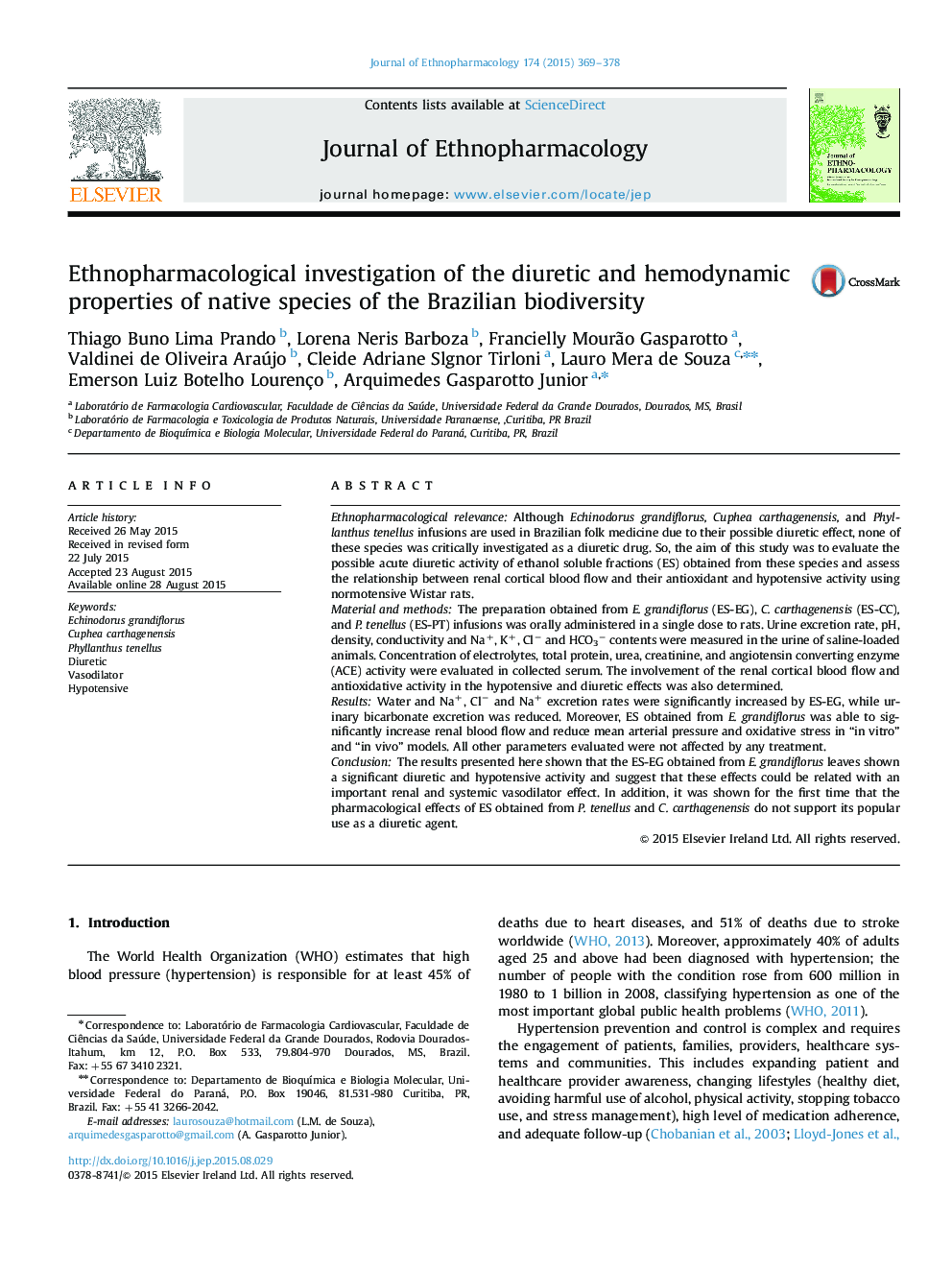| Article ID | Journal | Published Year | Pages | File Type |
|---|---|---|---|---|
| 5834752 | Journal of Ethnopharmacology | 2015 | 10 Pages |
Ethnopharmacological relevanceAlthough Echinodorus grandiflorus, Cuphea carthagenensis, and Phyllanthus tenellus infusions are used in Brazilian folk medicine due to their possible diuretic effect, none of these species was critically investigated as a diuretic drug. So, the aim of this study was to evaluate the possible acute diuretic activity of ethanol soluble fractions (ES) obtained from these species and assess the relationship between renal cortical blood flow and their antioxidant and hypotensive activity using normotensive Wistar rats.Material and methodsThe preparation obtained from E. grandiflorus (ES-EG), C. carthagenensis (ES-CC), and P. tenellus (ES-PT) infusions was orally administered in a single dose to rats. Urine excretion rate, pH, density, conductivity and Na+, K+, Clâ and HCO3â contents were measured in the urine of saline-loaded animals. Concentration of electrolytes, total protein, urea, creatinine, and angiotensin converting enzyme (ACE) activity were evaluated in collected serum. The involvement of the renal cortical blood flow and antioxidative activity in the hypotensive and diuretic effects was also determined.ResultsWater and Na+, Clâ and Na+ excretion rates were significantly increased by ES-EG, while urinary bicarbonate excretion was reduced. Moreover, ES obtained from E. grandiflorus was able to significantly increase renal blood flow and reduce mean arterial pressure and oxidative stress in “in vitro” and “in vivo” models. All other parameters evaluated were not affected by any treatment.ConclusionThe results presented here shown that the ES-EG obtained from E. grandiflorus leaves shown a significant diuretic and hypotensive activity and suggest that these effects could be related with an important renal and systemic vasodilator effect. In addition, it was shown for the first time that the pharmacological effects of ES obtained from P. tenellus and C. carthagenensis do not support its popular use as a diuretic agent.
Graphical abstractDownload high-res image (181KB)Download full-size image
